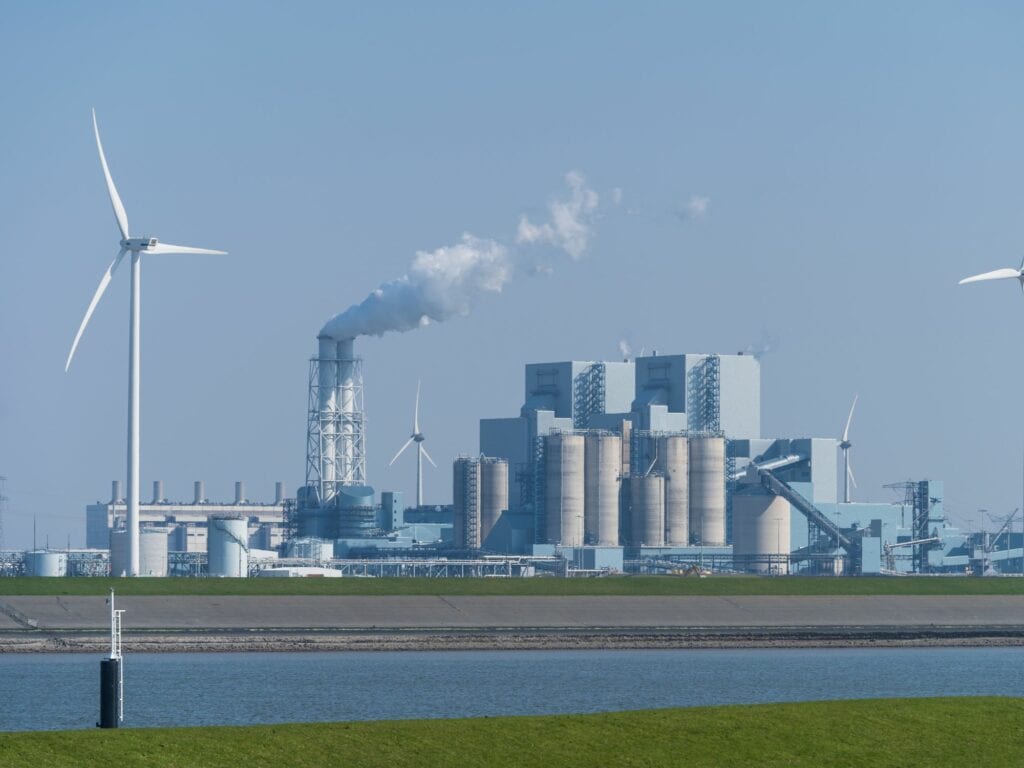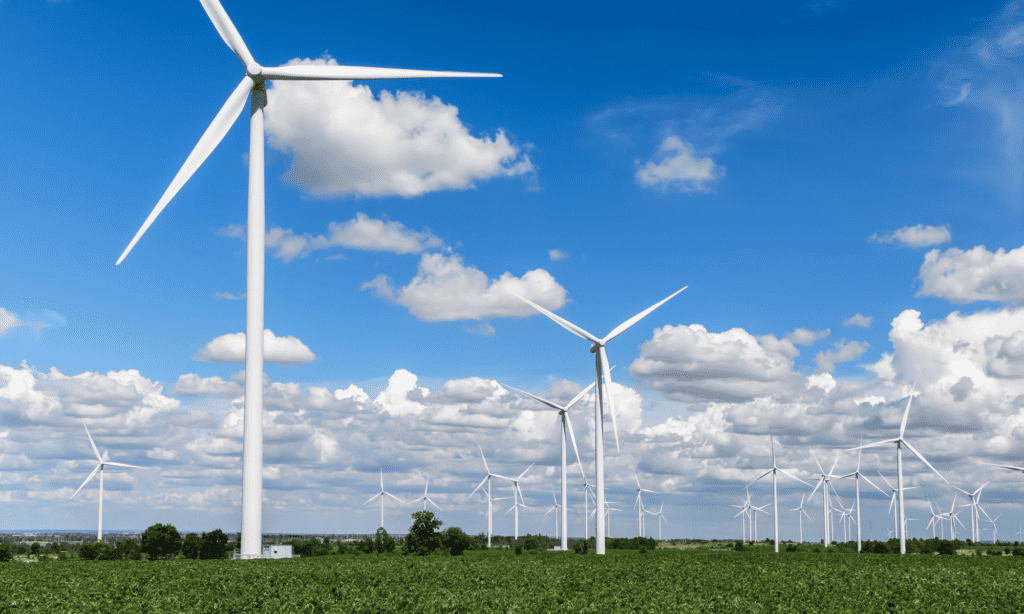Table of Contents
For well over a hundred years, the world’s relied heavily on fossil fuels like oil, natural gas and coal to meet the growing demand for energy. But now it’s clear that sticking mainly with these non-renewable energy sources just won’t work anymore. Extracting and burning fossil fuels puts a ton of greenhouse gases into the atmosphere, speeding up dangerous climate change. And beyond the environmental impacts, fossil fuels also pose big risks for energy security, access and fairness.
As global energy use keeps rising, there’s an urgent need to switch from limited fossil fuel reserves to renewable sources like solar, wind, hydropower and geothermal. Renewable energy has the potential to supply clean, sustainable power on a large scale to meet the world’s growing energy needs. With renewable technology costs plummeting, and more awareness of the existential threat from climate change, now’s the time to accelerate the shift to renewables. This article will highlight the flaws with fossil fuel dependence, the benefits of renewable energy, and the feasibility of making the full switch to 100% clean power worldwide.
The Dangers of Sticking with Fossil Fuels
Let’s be real folks – our world is still majorly addicted to fossil fuels to meet most of our energy needs. The experts estimate around 80% of global energy use still comes from non-renewables like oil, gas and coal. Now I get it, fossil fuels have powered economic growth for generations. But at this point, the harsh truth is they come with some massive costs that just aren’t sustainable anymore.

Climate Change Impacts
The biggest problem with continuing to burn ungodly amounts of fossil fuels is it makes climate change way worse. When we extract and burn all that oil, coal and gas, it spews insane amounts of heat-trapping greenhouse gases like carbon dioxide and methane into the air. According to the IPCC, the energy industry produces around 73% of global greenhouse gas emissions, mostly from fossil fuel burning. These emissions are quickly turning up the heat on our planet, as we can tell from record high temperatures, wild weather patterns, melting ice caps and rising sea levels everywhere. Climate change is already causing major impacts like droughts, floods, wildfires, storms and loss of habitats worldwide. If we don’t take real action to cut emissions now, scientists warn temperatures could skyrocket to catastrophic levels by 2100. The hard truth is relying on polluting fossil fuels just isn’t compatible with climate stability anymore. We need to make some big changes on this issue.
Health and Environmental Damage
Beyond greenhouse gas emissions, producing and using fossil fuels also causes tons of air and water pollution. Toxic stuff like sulfur and nitrogen oxides, particulate matter, volatile organic compounds, mercury and lead are released over the lifecycle of coal, oil and gas. This leads to acid rain as well as respiratory and heart illnesses from air pollution. Extracting and transporting fossil fuels also leads to oil spills and water contamination, damaging ecosystems. Research links being near oil and gas drilling sites with health risks like cancer, organ damage, birth defects and impaired brain function in kids. The health and environmental cost of our ongoing fossil fuel dependence is massive, harming the most vulnerable communities the most. We can’t keep treating our planet this way.
Supply Constraints
Another fundamental issue with fossil fuels is that they are non-renewable resources that will eventually run out. Oil, natural gas and coal form over millions of years, so reserves are inherently limited. As global demand has exponentially grown, extractable fossil fuel reserves are dwindling. Estimates vary on exactly how much recoverable oil, gas and coal remains worldwide. But at current consumption rates, coal reserves may last around 150 years, natural gas about 50 years, and oil under 50 years. And extraction gets costlier as easier to access reserves decline. Since modern economies and populations are so reliant on energy, depleted fossil fuel supplies pose huge risks like price spikes, shortages, and geopolitical conflicts. We simply cannot continue relying on finite resources.
The Benefits of Transitioning to Renewables
In contrast to fossil fuels, renewable energy derived from naturally replenished sources offers immense environmental, economic and social advantages. Though adoption is still in early stages, renewables are expanding rapidly as costs plummet. The share of renewables supplying global electricity demand doubled between 2010 and 2020. With supportive policies and sustained investments, renewable energy can fully displace fossil fuels to meet the world’s electricity, heating, cooling and transportation needs. Here are some of the key benefits driving the renewable energy transition:
Abundant Clean Energy

Renewable sources can provide practically limitless energy given their inexhaustible nature. The sun continuously beams enough radiation on the earth’s surface in 90 minutes to power the entire planet for a year. Winds are generated as long as the atmosphere and earth exist. Rivers flow as part of the water cycle. Geothermal heat emanates from the earth’s core. Bioenergy comes from agricultural and animal waste. Unlike finite fossil fuels, these renewable flows will never run out and can refuel themselves naturally.
The other crucial advantage of renewables is their extremely low lifecycle carbon emissions relative to fossil fuels. Wind, solar, hydropower, geothermal and sustainable bioenergy don’t directly burn any fuels, so they produce negligible greenhouse gas emissions. Even factoring indirect emissions from manufacturing and operations, renewables generate just 1-26g of CO2 equivalent per kWh – over 80% less emissions than natural gas. Widespread renewable adoption is essential for reaching net zero emissions and averting catastrophic climate change.
Climate Change Mitigation
According to the IPCC, renewable energy deployment must expand from around 26% of electricity generation today to at least 85% of power generation by mid-century to stay within relatively safe warming limits. With supportive policies, increased investments and technological advances, this ambitious but vital target is achievable. Committing fully to renewables across the power sector is the most impactful climate action governments and companies can take. It will also drive emissions reductions indirectly, as renewable electricity is used to power buildings, transport and industry. The IEA estimates that transitioning the global electricity system to renewables can reduce emissions by over 55% by 2050.
Public Health Improvements
Phasing out fossil fuels for renewable energy will also substantially improve public health. Unlike fossil fuel production and combustion, most renewable technologies emit minimal air and water pollutants over their lifecycle. Reduced particulate matter from abolished coal plants will prevent asthma, lung disease and smog. Declining sulfur dioxide and nitrogen oxide emissions will curtail acid rain. With expanded clean power access, indoor air pollution from burning solid fuels will also decrease. Investing more in wind, solar, hydroelectric and geothermal power will avert up to 3 million premature deaths annually by 2050 according to WHO estimates. The positive health impacts make the renewable transition imperative.
Energy Independence
Transitioning to renewable electricity can also strengthen energy security and resilience. Many countries today are heavily dependent on imported fossil fuels – a major economic vulnerability. But renewables like wind, solar and geothermal power are indigenous resources that cannot be embargoed. Investing more in local renewables diversifies the energy mix while reducing reliance on global commodity markets.

Distributed renewable generation like rooftop solar also makes the energy supply much less susceptible to disruptions. Products like EcoFlow portable EcoFlow DELTA power stations allow households to store solar energy for resilient backup power during grid outages. The EcoFlow DELTA stations can be recharged from solar panels in as little as 1.6 hours, providing an off-grid source of electricity. Even natural disasters that damage centralized infrastructure will not cut off power from decentralized renewable microgrids. Having a diverse foundation of domestic renewables bolsters national energy security and self-sufficiency.
Job Creation
Shifting energy investment towards renewables will be a major driver of sustainable job creation worldwide. According to IRENA, the renewable energy sector employed 11.5 million people directly and indirectly in 2019. The Paris-aligned energy transition could more than triple renewable jobs to 42 million by 2050. Employment spans manufacturing, installation, operations, maintenance and supporting services. With the right training and skills development policies, renewable energy can provide quality livelihoods and inclusive employment growth. There are also significant job multiplier effects, as money saved from expensive fossil fuel imports is redirected locally. Renewable deployment is a proven engine for green job creation and economic revitalization.
The Feasibility of 100% Renewable Energy
Research clearly shows that it is technically and economically feasible for the world to transition fully to renewable energy across all sectors. But bold systemic changes are required to accelerate this shift. Various countries like Denmark, Uruguay and Costa Rica as well as companies like Google and Apple have already committed to going 100% renewable. Others can follow suit with the right long-term investments and policy support.
A common myth is that renewables are too intermittent and lack reliability to power entire economies. But diversifying sources and storage solutions can address intermittency. An optimal mix of solar, wind, geothermal, hydroelectric and bioenergy combined with expanding battery storage is fully capable of reliably meeting energy demand. With smart grids and demand management, a integrated renewable system is more resilient than centralized grids.
The rapidly falling costs of wind and solar power also demonstrate they can viably replace fossil fuels. Global average levelized costs for utility-scale solar dropped 85% between 2010 and 2019, while onshore wind fell 56%, making both cheaper than new gas or coal plants. With scale, renewable costs will keep decreasing. Bloomberg analysts project that within 5-10 years, building and operating new renewable plants will be cheaper than just operating existing coal plants in most countries. Renewables are becoming the most cost-competitive option for new power.
The evidence from pioneering places shows that transitioning fully to renewable energy is possible on a large scale if there’s good planning and policy support. South Australia generated record levels of renewable electricity in 2020 – renewables provided 60% of their total power that year. Both Denmark and Uruguay regularly produce over 50% of their electricity from wind and solar now. Many other regions like California, the state of Tamil Nadu in India, and hundreds of cities worldwide have set goals to get 100% of their energy from renewables within the next few decades. If these places can make major progress on going renewable, it shows the transition is doable. With the right policies and investments in place, a full switch to clean energy can absolutely be achieved.
Call to Action
Making a fast switch globally to renewable energy will take real action by everyone involved. Policymakers gotta enact ambitious plans to cut carbon, like carbon pricing, clean energy rules, phasing out fossil fuels, and investing in renewable infrastructure. Big fossil fuel companies need to transition from non-renewable extractions to clean energy development and delivery. Financial institutions should direct money towards renewable installations and companies. For individuals who can afford it, switch to renewable energy plans and invest in rooftop solar. With coordinated efforts across all sectors, we can transform the huge task of shifting to renewables from targets into real results.
Conclusion
The bottom line is replacing our reliance on polluting and limited fossil fuels with clean renewable energy is the only sustainable way forward to meet growing energy demand. Renewables offer huge environmental, economic and social advantages over conventional energy sources. With supportive policies, investments and collective action, it’s totally feasible for all countries to fully switch to renewable energy in the coming decades. Sure the shift will involve short-term costs and adjustments, but sticking with fossil fuel dominance will cause way greater long-term harm to the planet. Renewable energy is the only solution capable of avoiding climate catastrophe while fairly meeting development needs. Transitioning to renewables must become a top global priority – our collective futures depend on it.
